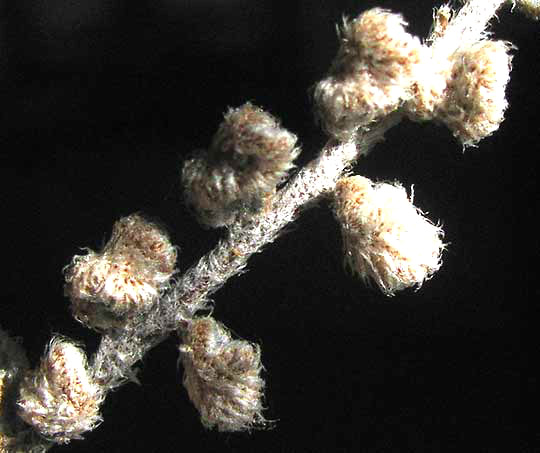Excerpts from Jim Conrad's
Naturalist Newsletter
from the December 30, 2012 Newsletter issued from the valley of the Dry Frio River in northern Uvalde County, southwestern Texas, on the southern border of the Edwards Plateau; elevation ~1750m (~5750 ft); N29.62°, W99.86°; USA
LIP FERN
In thin, very dry soil between limestone rocks atop a nearby hill there's a dignified, even stately little six-inch tall (15cm) fern that at first you don't see because it's so small and densely invested with silvery hairs that the fronds are whitish, thus well camouflaged among the white limestone rocks and winter's crisp, sunlight-reflecting leaves. Only when you get up close and pay attention do you see its charm, as shown below:
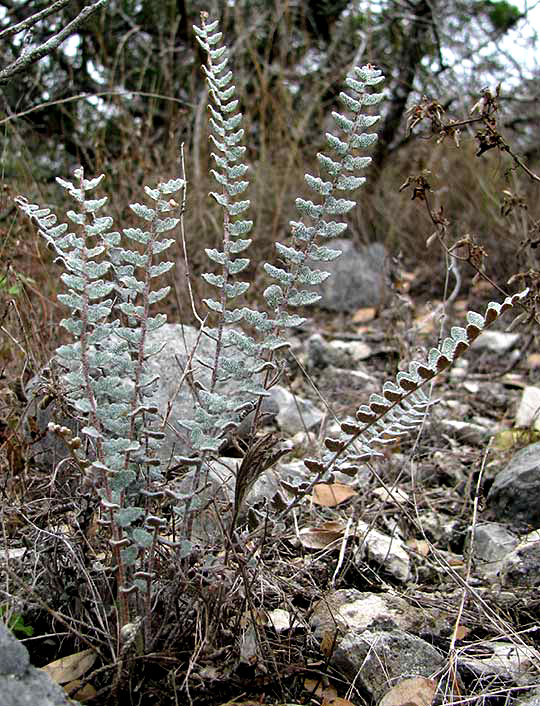
If you examine with a magnifying lens this fern's frond segments, or pinnae, you see that their top surfaces are covered with very unusual white, triangular scales fringed with hairlike teeth, as shown below:
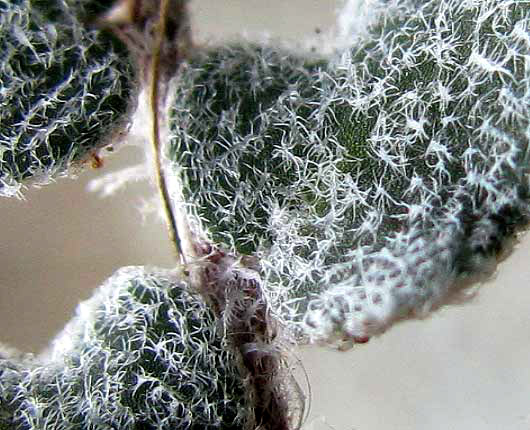
Bottoms of the pinnae are even more thickly mantled with white scales, as shown below:
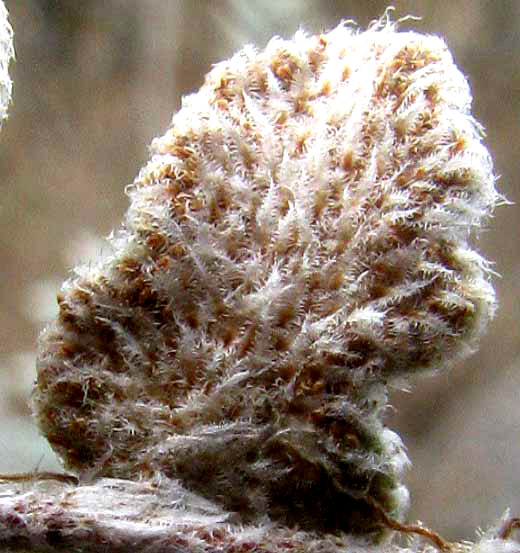
When you find a fern that's new to you like this, you need to look for clusters of spore producing sporangia -- on frond bottoms the clusters often are called sori, or fruitdots -- because sporangia clusters come in all kinds of configurations, and the configurations vary from species to species, so they make good field marks to help in identification. At first I thought the fronds in the picture were all sterile, but when I looked very closely with lens I saw sporangia, as you can see below:
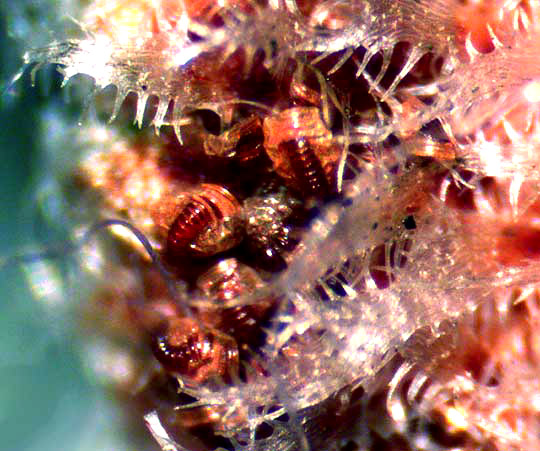
The sporangia are those reddish-brown, snail-like items almost hidden among the deeply fringed scales on a pinna's undersurface. The seemingly segmented ridges running across the spherical sporangias' tops are special structures helping with spore dispersal. They're called annuluses. When spores inside a sporangium are mature, water inside its annulus's cells or segments drains out causing tension along the annulus's length itself, and across the surface of the sporangium to which it is attached. Eventually the baglike covering of the sporangium snaps open, scattering spores. In this species, each sporangium holds 32 spores. An unusual feature of this species is that its sporangia are not neatly clustered in distinctive fruit-dots on the undersurfaces of the pinnae or inside curled-under pinna-edge margins, but rather haphazardly along the pinnae margins.
This interesting fern is a member of the genus Cheilanthes, a group of ferns commonly known as lip ferns. It's CHEILANTHES EATONII*, sometimes referred to as Eaton's Lip Fern. It occurs widely on rocky slopes and ledges, mostly on limestone and granite, in much of Mexico, in Costa Rica, and in the US from Arizona to Colorado and south to here, and sporadically to Virginia.
The fern's coating of white scales protects its fronds from extremes of sunlight, wind and temperature atop the hill, and reduces evaporation of precious water during long periods of drought. When the fern gets very dry, its pinnae ball up, thus offering less surface area vulnerable to evaporation, as shown below:
